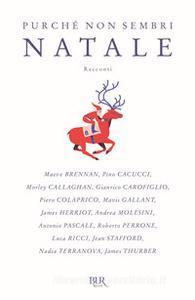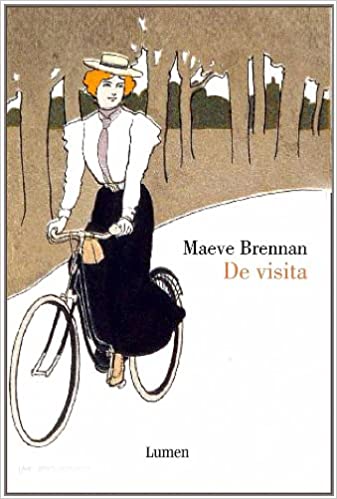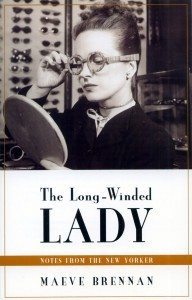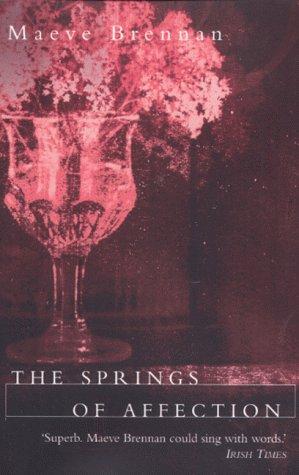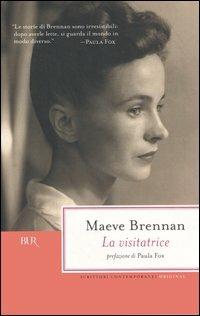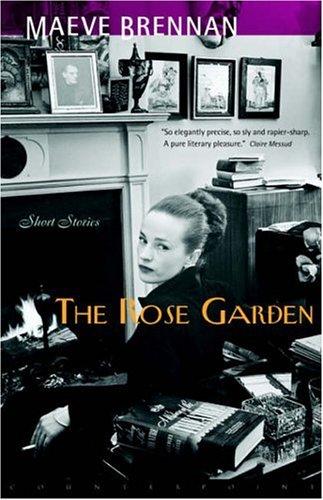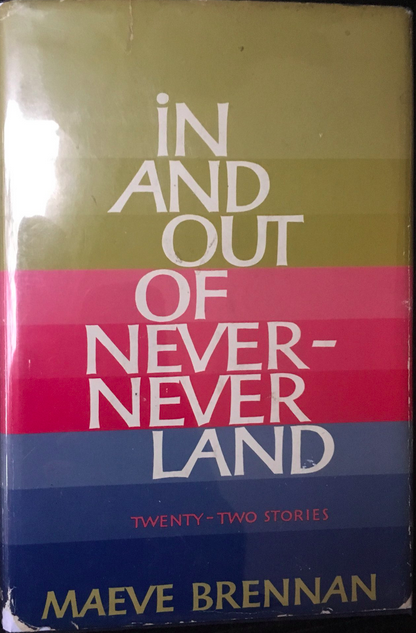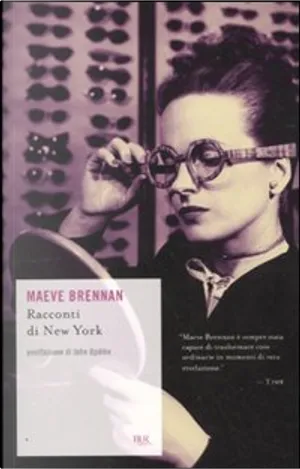Brennan, Maeve fiction writer and New Yorker columnist, called the ‘Long-Winded Lady’, was born in Dublin on 6 January 1917, second of four children of the nationalist journalist Robert (‘Bob’) Brennan (qv), and his wife, Una (née Anastasia Bolger) both of whom she portrayed in successive stories.
When she was young her father was often on the run from the British, and later from Irish Free State forces.
In late 1921, as the Anglo-Irish Treaty was negotiated in London, the Brennans bought and moved into 48 Cherryfield Avenue, Ranelagh, Dublin. This modest terraced house, where they remained until 1934, is the setting for almost half of Brennan’s forty published short stories. ‘The day we got our own back’ (1953), describes an armed raid there in 1922, when Robert was in hiding elsewhere.
In 1934, Taoiseach Éamon de Valera appointed Robert Brennan as secretary of the Irish legation in Washington, DC, and Brennan, who had finished her secondary schooling, moved to the US with her family. She attended Immaculata Seminary in Washington, followed by American University, where she was active in student literary societies and graduated Bachelor of Arts in June 1938. She studied library science at the Catholic University of America, also in Washington, and in 1940 or 1941 moved to New York. She lived first at the Holley Hotel on Washington Square, and worked at the New York Public Library (NYPL) in central Manhattan.
Brennan left the NYPL when Carmel Snow (qv), Irish-born editor of Harper’s Bazaar, invited her to join the magazine. From 1943 to 1949 she wrote fashion copy for Harper’s and for its wartime offshoot, Junior Bazaar, and completed her pitch-perfect novella ‘The visitor’ before the end of 1945. Her striking, glamorous image – dark lipstick, high heels and hair piled up – dates from this period, while trained observation of fabric, cut and colour later lent characteristic detail to all her short fiction and essays. She lived mostly in Greenwich Village, met members of the Abbey Theatre and other visiting artists, and often accompanied photographers on assignment for the magazine. They included Karl Bissinger, who famously photographed her in 1948, when she escorted the playwright Denis Johnston to a session with him.
In 1949 William Shawn recruited Brennan to the New Yorker, to write unsigned fashion notes and book reviews. In December 1950 Harper’s Bazaar published her story ‘The holy terror’. In April 1952 ‘The poor men and women’ followed: the first of many stories, in two cycles about contrasting, yet similar, couples, in which she probes the walls where she grew up for the codes they imposed. Beginning in December that year, the New Yorker fiction editor William Maxwell, later a trusted friend, published all of her further stories of Dublin, alternating them with another series set in an exclusive community on the Hudson River, which she called Herbert’s Retreat. The Irish-born domestic servants she places there are surprising and memorable, drawn in many dimensions with ferocious sympathy and Brennan’s keen awareness of household politics and registers of language. Throughout the 1950s and 1960s, her ‘Long-winded lady’ pieces also appeared regularly among the mostly male voices in New Yorker’s most-read section, ‘Talk of the town’.
Colleagues at her new office admired Brennan’s appearance, mordant wit and especially her writing; many appreciated her impulsive kindness. Several men’s names were linked to hers, not always accurately, but in 1954 she married charming, talented, fellow staff-writer St Clair McKelway, who was addicted to alcohol and three times divorced, and went to live with him in Snedens Landing, the original of Herbert’s Retreat. The marriage lasted until 1959, when she moved back to Manhattan.
Intimidatingly acerbic and helplessly compassionate, Brennan worked compulsively to capture the human realities behind the depictions of Irish domesticity in the 1937 constitution and popular writing. Her first fiction collection, In and out of Never-Never Land, and her own selection, The long-winded lady, appeared in the US in 1969. Critics hailed both, but she had begun to suffer writer’s block, and bouts of mental illness.
Brennan’s longest and most powerful story, ‘The springs of affection’, went through many versions before appearing in the New Yorker on 18 March 1972. Set in County Wexford, and based on her family, it caused hurt, and estranged her from some relatives. The magazine published only two more of her stories. It continued to pay her, and she wrote book reviews, but spent little time there in the years that followed.
During a series of artist’s residencies at the MacDowell Colony (now MacDowell) in New Hampshire in the 1970s, Brennan wrote agonised, occasionally humorous, letters to Maxwell about her difficulties with money and her writing. She spent months at a time with relatives, first in Dublin, then, after a disturbing incident at the New Yorker offices and a spell in a psychiatric hospital, at her brother’s home in Peoria, Illinois. Hinting at disarray, the publication date of her second fiction collection, Christmas eve, was June 1974.
Brennan’s books were not reprinted, nor were they published in Ireland or Britain. Between periods spent in hospital, she lived in run-down hotels, or slept at the New Yorker offices, rejecting old friends who tried to help her. Unknown to them, however, and to most readers, she had made new, supportive friendships at MacDowell with Tillie Olsen and Edith Konecky.
Brennan’s last New Yorker piece, ‘A blessing’, appeared on 5 January 1981. The magazine’s management found her a nursing home in Arverne, New York, but declined to give information on her whereabouts to anyone outside the organisation, so that family and friends lost contact with her. She died of heart failure there on 1 November 1993.
